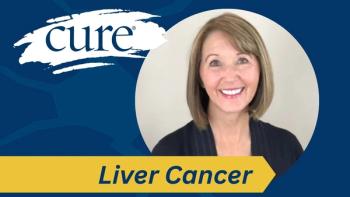
FDA Grants Priority Review to Lonsurf for Gastric Adenocarcinoma
The Food and Drug Administration (FDA) has granted a priority review to a supplemental new drug application for Lonsurf (TAS-102; trifluridine/tipiracil) for use in previously treated patients with advanced or metastatic gastric adenocarcinoma, including cancer of the gastroesophageal junction.
The Food and Drug Administration (FDA) has granted a priority review to a supplemental new drug application for Lonsurf (TAS-102; trifluridine/tipiracil) for use in previously treated patients with advanced or metastatic gastric adenocarcinoma, including cancer of the gastroesophageal junction.
The supplemental new drug application is based on data from the phase 3 TAGS trial, in which Lonsurf reduced the risk of death by about one-third compared with placebo in patients with heavily pretreated gastric or gastroesophageal junction cancer. The TAGS trial also showed improvements in progression-free survival and disease control and demonstrated a predictable and manageable safety profile.
Under the Prescription Drug User Fee Act, the FDA is scheduled to make a decision on the supplemental new drug application by Feb. 24, 2019.
"We look forward to working with the FDA as they consider the application for Lonsurf under priority review," Martin Birkhofer, M.D., senior vice president and chief medical officer of Taiho Oncology, Inc, the manufacturer of Lonsurf, said in a press release.
TAGS was conducted to confirm findings from a phase 2 Japanese study in patients with metastatic gastric cancer in which Lonsurf was evaluated after failure of standard chemotherapies (fluoropyrimidines, platinums, and taxanes) or irinotecan and found to lead to a median overall survival of 8.7 months and a disease control rate of 65.5 percent.
The global phase 3 TAGS double-blind study enrolled 507 adults with histologically confirmed, nonresectable metastatic gastric/gastroesophageal junction cancer and an ECOG performance status of 0 or 1 who received two or more prior chemotherapy regimens. Patients were randomized 2:1 to receive Lonsurf (35 mg/m2 twice daily on days one to five and eight to 12 of each 28-day cycle) or placebo plus best supportive care, and were treated until progression, intolerability, or patient withdrawal.
The primary cancer site was gastric in 71 percent and gastroesophageal junction in 29 percent. Fifty-five percent had three or more metastatic sites. Sixty-three percent in each arm had three or more prior treatments and 44 percent in each arm had prior gastrectomy. More than 90 percent received prior platinum, fluoropyridine, and taxane treatment. About one-third in each arm had prior ramucirumab.
Median overall survival, the primary endpoint, was 5.7 months for patients assigned to Lonsurf compared with 3.6 months for patients randomized to placebo. The 2.1-month improvement in median overall survial with Lonsurf over placebo translated into a hazard ratio for death of 0.69. The 12-month overall survival rate for the Lonsurf group was 21 percent versus 13 percent for the placebo group.
Multivariate analysis the following factors to be prognostic for overall survival: ECOG performance status of 1 (vs 0), two prior regimens (vs. 33), age less than 65 years (vs 65 years or older), one or two metastatic sites (vs. three), and negative HER2 status (vs. positive or undetermined). After adjusting for these factors, the treatment effect for Lonsurf was maintained.
Median progression-free survival, a secondary endpoint, was also significantly improved with Lonsurf compared with placebo (two vs. 1.8 months). The six-month PFS rates were 15 percent and 6 percent, respectively. The progression-free survival advantage for Lonsurf was maintained when assessed by subgroups based on age, region, ethnicity, ECOG performance status, primary site, number of metastatic sites, and prior treatment with ramucirumab, among others.
The objective response rate with Lonsurf was 4 percent compared with 2 percent for placebo. In the active treatment group, there was one complete response, 12 partial responses and 115 patients with stable disease, for a disease control rate of 44 percent. The disease control rate in the placebo group was 14 percent. The absolute difference between groups in the disease control rate was 30 percent.
Time to deterioration of ECOG performance status to 2, a secondary endpoint, was longer in the Lonsurf group compared with the placebo group (median, 4.3 vs 2.3 months).
Grade 3 or higher side effects of any cause occurred in 80 percent of patients on Lonsurf versus 58 percent of those assigned to placebo. Lonsurf was associated with more treatment-related side effects of any grade (81 percent vs 57 percent). There was one treatment-related death in each group. Grade 3 or higher febrile neutropenia of any cause was reported in 6 (2 percent) patients treated with Lonsurf.
Dosing modification (dose delay or reduction) to manage side effetcs was required in 58 percent of the Lonsurf group. Treatment had to be discontinued due to adverse events in 13 percent. G-CSF treatment to manage neutropenia was necessary in 16 percent. The most common side effects leading to dosing modification were neutropenia and/or decreased neutrophil count (37 percent), anemia and/or decreased hemoglobin level (9 percent), and leukopenia and/or decreased white blood cell count (6 percent).
Yoon-Koo Kang, M.D., Ph.D., a professor in the Department of Oncology at the Asan Medical Center of the University of Ulsan College of Medicine in Seoul, Korea, commented that although TAGS was a global trial, Asian patients were underrepresented, with Japanese patients constituting only 15% of the total patient population. Kang was not involved in the TAGS study.
The need for biomarkers to define the best third and later line of treatment for advanced gastric cancer is urgent, he said. Sequential use of these agents is possible if they are tolerated. Lonsurf in combination with immunotherapy or antiangiogenic agents should be investigated, he added.
This article originally appeared on




